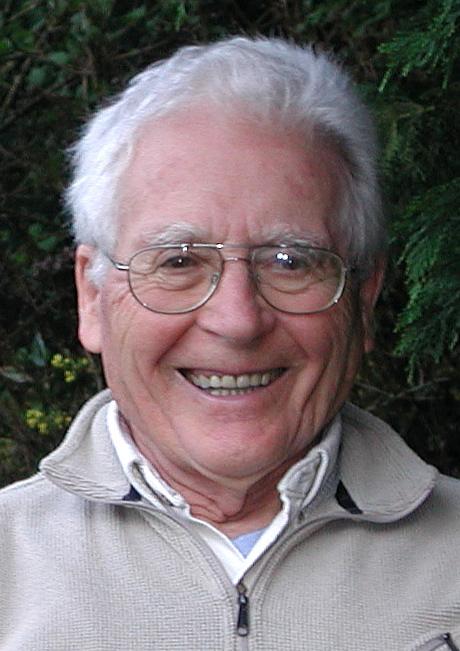Table of Contents
- Exploring the Life and Legacy of James Lovelock
- The Gaia Theory: Understanding Earth as a Living Entity
- Innovations and Inventions that Shaped Environmental Science
- James Lovelocks Impact on Climate Change Awareness
- Lessons from Lovelock: Recommendations for a Sustainable Future
- Q&A
- The Way Forward
Exploring the Life and Legacy of James Lovelock
James Lovelock, a pioneering scientist and environmentalist, is perhaps best known for formulating the Gaia Theory, which proposes that Earth functions as a self-regulating system. This revolutionary concept has inspired countless discussions surrounding ecology and global warming. Lovelock argued that living organisms and their inorganic surroundings interact in ways that maintain the conditions for life, establishing a profound connection between humanity and the planet. His work encourages a holistic view of the Earth, where every element is interlinked, highlighting the necessity for sustainable practices.
In addition to his groundbreaking theories, Lovelock’s career spanned various fields, from biochemistry to climatology. He made significant contributions during the initial research for the Mariner missions to Mars in the 1960s, utilizing his expertise in detecting gases to analyze planetary atmospheres. Lovelock’s innovative use of analytical instruments paved the way for future explorations of extraterrestrial environments, demonstrating his keen ability to think outside the box and apply scientific principles across different disciplines. His work garnered recognition not just within scientific circles but also among environmental activists around the globe.
Beyond his scientific achievements, Lovelock has been an outspoken advocate for taking immediate action against climate change. His perspective often emphasizes the urgency of addressing ecological challenges. Here are some lesser-known facts about him:
- Inventor of the Electron Capture Detector: This device revolutionized environmental monitoring by providing a means to detect trace gases.
- Age and Productivity: Lovelock continues to publish and engage with contemporary climate debates, demonstrating remarkable vitality at the age of 103.
- Multifaceted Interests: He is also a passionate chef and has authored several books, merging his scientific insights with personal reflections.

The Gaia Theory: Understanding Earth as a Living Entity
The Gaia Theory posits a fascinating view of Earth as a self-regulating, complex system where living organisms interact with their inorganic surroundings to form a synergistic environment. This perspective goes beyond the traditional view of nature as a mere backdrop for human activity, proposing instead that life itself plays a crucial role in maintaining the conditions necessary for life. By understanding these interactions, we are encouraged to adopt a more holistic approach to environmental issues and appreciate the delicate balance of ecosystems.
The concept was notably popularized by James Lovelock, a British scientist who advanced the idea in the 1970s. According to Lovelock, the Earth behaves like a giant organism, constantly adapting to changing conditions. He emphasized that the interconnectedness of life forms—from microscopic bacteria to towering trees—contributes significantly to Earth’s biome. This interplay ensures that conditions such as temperature, atmospheric composition, and ocean salinity are favorable for the continued existence of life.
Understanding this theory inspires a deeper reverence for the planet. It suggests that even the smallest actions—like planting a tree or reducing energy consumption—can have a cascading effect on the health of our ecosystem. With this in mind, we see a shift towards sustainability as not just a choice, but a responsibility. The implications of the Gaia Theory highlight the importance of stewardship and encourage innovative solutions for preserving our environment for future generations.

Innovations and Inventions that Shaped Environmental Science
Throughout history, myriad innovations have played a pivotal role in advancing our understanding of environmental science, and few figures stand out as prominently as James Lovelock. His pioneering work, particularly the development of the Gaia theory, revolutionized how we perceive Earth as a self-regulating system. This groundbreaking concept proposed that the Earth actively maintains conditions suitable for life, a radical shift that prompted a deeper exploration into ecological interdependencies and systems thinking. Lovelock’s theory not only challenged conventional views but also underscored the connection between living organisms and their environment.
Another significant contribution from Lovelock was the invention of the electron capture detector. This innovative tool provided a method to detect trace amounts of chemicals in the atmosphere, allowing scientists to monitor environmental pollutants with unprecedented accuracy. The implications of this invention have been profound, as it facilitated the understanding of how pollutants affect both local and global ecosystems. This technological advancement opened doors for further research into climate change, air quality, and the health of our planet.
Moreover, Lovelock’s insights have inspired numerous initiatives aimed at fostering sustainability and biodiversity. He advocated for the use of sustainable technologies and a shift toward renewable energy sources. His work has sparked global movements focused on reducing carbon footprints and promoting ecological restoration, emphasizing the urgent need for humanity to take an active role in protecting the environment. Some of the key innovations and concepts stemming from Lovelock’s influence include:
- Interdisciplinary Research: Merging biology, geology, and atmospheric science to understand environmental issues comprehensively.
- Ecological Responsibility: Encouraging individuals and industries to consider their environmental impact.
- Climate Advocacy: Raising awareness about climate change and the necessity for action.

James Lovelocks Impact on Climate Change Awareness
James Lovelock, renowned scientist and environmentalist, played a pivotal role in raising awareness about climate change through his groundbreaking Gaia theory, which proposes that Earth functions as a self-regulating system. This innovative concept significantly shifted the perspective on environmental science. His view of Earth as a living organism emphasized the interconnectedness of all life forms, compelling people to consider the impact of human activity on the planet. Lovelock’s ability to articulate complex scientific ideas in accessible language has made his work resonate with both scholars and the general public.
Throughout his career, Lovelock produced compelling visual tools, such as the famous Gaia Hypothesis, to illustrate the intricate relationships within the biosphere. One of his notable contributions was the development of the Earth Systems Science framework, which analyzes how various components of Earth systems—atmosphere, hydrosphere, biosphere, and geosphere—interact. His work not only contributed to scientific discourse but also sparked public engagement, leading to widespread recognition of climate issues. Lovelock’s warnings about the precarious state of our planet especially drew attention during the industrial expansion of the late 20th century, prompting a call to action that continues to echo today.
| Key Contributions | Impact on Climate Awareness |
|---|---|
| Gaia Theory | Shifted perception of Earth’s systems |
| Earth Systems Science | Highlighted human impact on the environment |
| Public Speaking | Educated diverse audiences on climate change |
| Books & Publications | Influenced academic and public discussions |
Additionally, Lovelock’s insights on technological solutions to combat climate change garnered both praise and criticism, as he advocated for the use of nuclear energy and genetic engineering. His controversial opinions ignited vital debates within environmental circles, pushing beyond traditional limits of conservation and into innovative fields. By framing climate change as not just an environmental issue but a fundamental challenge to survival, Lovelock inspired future generations of activists, scientists, and policy-makers to think critically about how we choose to coexist with our planet.

Lessons from Lovelock: Recommendations for a Sustainable Future
James Lovelock’s groundbreaking ideas have shaped the way we perceive our planet and the intricate balance of its ecosystems. One of his most influential contributions is the Gaia theory, which emphasizes that Earth functions as a self-regulating system. To uphold sustainability, we can draw valuable insights from his work:
- Embrace Interconnectedness: Recognize that all living and non-living components of the Earth are interdependent. Policy-making and community initiatives should reflect this interconnectedness, promoting collaborative solutions to environmental challenges.
- Integrate Technology with Nature: Innovate sustainably by combining technological advances with ecological principles. This approach can facilitate renewable energy solutions and resource-efficient practices that align with Earth’s natural cycles.
- Foster a Deep Respect for Nature: Cultivate an ethic of stewardship towards the environment. Education and awareness programs can engender a sense of responsibility and a cultural shift that values conservation and restoration efforts.
Lovelock’s foresight invites us to rethink our relationship with the Earth. By analyzing his recommendations, we can develop actionable strategies to combat climate change and biodiversity loss. Below is a summary of some notable concepts encouraging a commitment to sustainability:
| Concept | Description |
|---|---|
| Gaia Theory | The idea that the Earth is a self-regulating system, emphasizing balance among all life forms. |
| Proactive Measures | Advocating for early interventions to prevent ecological crises rather than reacting to them. |
| Holistic Approaches | Encouraging integrated solutions that consider ecological, social, and economic impacts. |
By applying these lessons, we have the potential to forge a sustainable future for generations to come. Let Lovelock’s vision serve as a guide, reminding us that each step towards greater ecological awareness and action can create ripples of positive change in our communities and beyond.
Q&A
Q&A: Fun Facts About James Lovelock
Q: Who is James Lovelock? A: James Lovelock is a renowned British scientist, environmentalist, and inventor, best known for proposing the Gaia Theory in the 1970s. This theory suggests that Earth and its biological systems behave as a single self-regulating entity. Lovelock’s work has profoundly influenced environmental science and climate change discussions.Q: What inspired Lovelock to develop the Gaia Theory? A: Lovelock drew inspiration from observing the Earth as a complex system where living organisms interact with their inorganic surroundings. His research on the atmosphere of Mars and the conditions necessary for life led him to consider how life on Earth maintains a stable environment, giving rise to the Gaia Theory.
Q: Did James Lovelock have a typical academic background? A: Not quite! Lovelock initially trained as a chemist, earning his degree from the University of Manchester. However, he didn’t follow the conventional academic path. Instead, he spent part of his career in various scientific research roles, including a notable stint working for NASA, where he developed instruments to detect organic compounds on Mars.
Q: How has Lovelock’s work impacted environmental movements? A: Lovelock’s Gaia Theory has been instrumental in shifting the perspective on Earth’s ecosystems, advocating for a holistic view of environmental protection. His ideas have inspired many environmental activists and organizations, emphasizing the interconnectedness of life and the importance of sustainable practices.
Q: What are some of James Lovelock’s notable inventions? A: Among Lovelock’s impressive inventions is the Electron Capture Detector (ECD), which significantly advanced the detection of pollutants and other chemicals in the environment. This device played a critical role in improving our understanding of environmental contamination.
Q: Is Lovelock still active in scientific discussions today? A: As of the latest information available, James Lovelock, although in his later years, continues to engage in discussions about climate change and environmental issues. He writes and speaks publicly about his views, reinforcing the urgency of addressing pressing ecological challenges.
Q: What is a lesser-known fact about James Lovelock? A: Lovelock is also a passionate advocate for the use of technology in solving environmental crises. He believes that innovation can coexist with nature and that we should harness advancements in science for the benefit of our planet.
Q: How can someone learn more about James Lovelock’s work? A: To explore Lovelock’s contributions further, one can read his books, such as “Gaia: A New Look at Life on Earth” and “The Revenge of Gaia.” Additionally, many interviews and lectures featuring him are available online, revealing his thought processes and predictions regarding the future of our planet.
By understanding these fun facts, readers can appreciate not just Lovelock’s scientific contributions but also the broader implications of his work in today’s world.



0 Comments